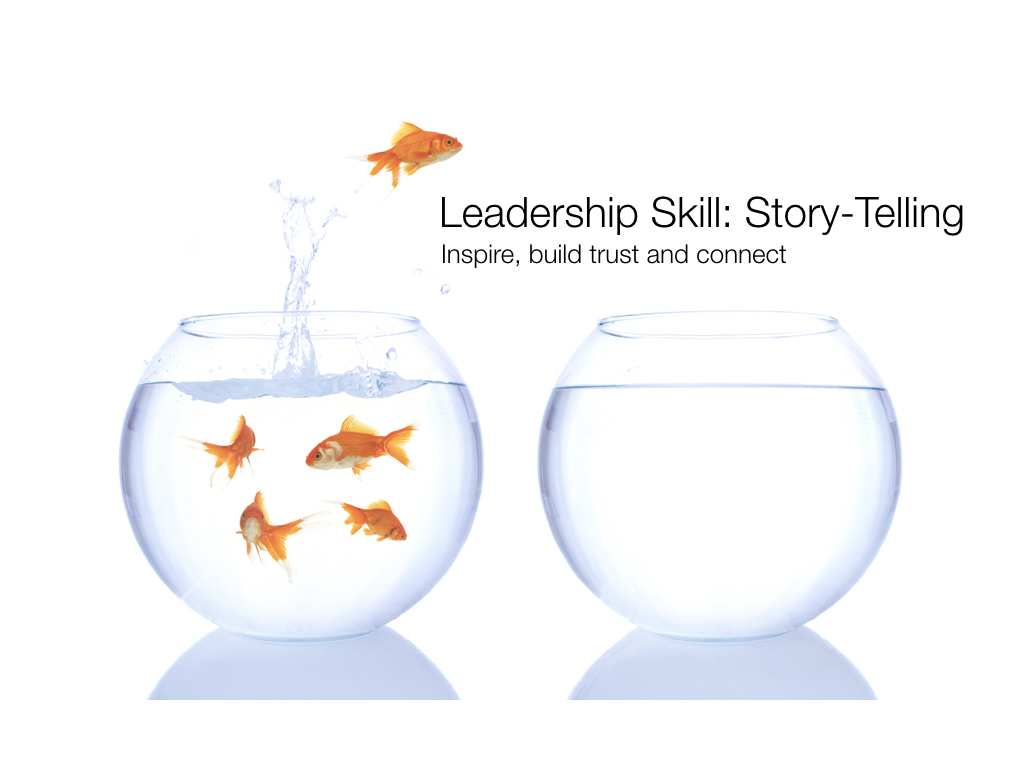Leadership Skills Essentials: Story-Telling
Stories connect us emotionally, and great leaders understand this well.
What does this really mean?
Let’s imagine, for example, that you have a group of employees working on a tight project deadline, with an extremely demanding client who has very high expectations. This is also, let’s imagine, a high profile project and the outcome of this project will have a significant impact on your business. If all goes well, your company will rip tremendous financial benefit, wide publicity and many new opportunities. If the project fails, in any way, your company may suffer unrepairable consequences. If this sounds like a pretty stressful scenario, this is exactly what I wanted you to imagine. At this point, your team is running on high speed and the early excitement around the project is dying out due to exhaustion and an overall tension among team members. Your job, as a leader, is to turn that around.
What you really need in this exact moment is something that will give your team the fuel to keep going. This fuel is called purpose, and stories is how you generate a sense of purpose that can prevail over time. Studies have shown over and over again that financial reward is short lived. The best carrot stick at the end of this road, is a real sense of meaning and purpose that the employees can feel during the project execution, and after the project is completed. Why? Because when we feel like what we do has a real impact – that what we do MATTERS, we become personally invested. If, in this example, the team is not feeling like their work, individually, is making a real difference, and/or they cannot see the bigger picture of WHY they are doing what they are doing, then they will run out of steam. But, fueled by purpose, they will find the will to keep going…
How does telling a story fit into this scenario? In this case, a wise leader would take the time to invite the team everyday to consider the future outcome of their work. This leader would PAINT A PICTURE of the future they are creating, as a group and individually. The best way to do this, is to share stories. There is a craft in story-telling, but like any other skill, this is something anyone and everyone can and should learn. Linking their work with this bigger picture image is the art of story telling. Infused with real personal accounts of struggle, failure, and finally success, team members will find that they are in this together. This sense of shared responsibility, and shared humanity, is what create great movements (think the Dali Lama and the fight to free Tibet, and Martin Luther King Jr. on the Civil Right’s Movement). It is, also, what creates great teams and great companies.
In not so stressful scenarios, a great story is still the best route to inspire and motivate. When great leaders share vulnerably about their life’s failures and successes, they are building trust and connecting in ways that pure science, graphs, and statistical data will never do.
I recall speaking at a sustainability event a few years ago, and being asked to share a little about myself, as one of four panelists. All the guests on the panel were talented, and well-known names in the sustainability world. I was, by far, the least qualified of the group, and the only one on stage who was not, at that point, working any longer in the sustainability field. Yet, when I introduced myself, I shared how cancer had changed my life, and that I believed that the most important thing we can all do to protect our beautiful Planet, is to care for ourselves and one another with deeper compassion, kindness, and real integrity. After the panel concluded I was surrounded by participants from the audience, who all shared with me, how they too have had similar struggles and feel an urge to create better lives for themselves and their families. The story I told was from my heart, and it required tremendous vulnerability. Yet, the story impacted everyone in ways that sharing a list of accomplishments on my resume could have never done. Stories build trust and connection.
At the end of every Team Climate Change TM training I run at corporations, everyone in the group is invited to share a story. I specifically request that they choose a moment in their lives when they had to deal with real adversity, and where there was struggle, fear and even despair. I invite them to share the pain, and also the lessons they have learned. By far, the last session, when the stories are all shared in a private conference room with the whole group together, is the most impactful moment of the entire training. I believe that these employees end-up fostering a kind of trust for one another that they would never be able to achieve was not for the level of openness, vulnerability and real emotional connection they create during this last meeting.
Over the years I have learned that…if you want to lead, you need to share your stories. There is no way around this.

